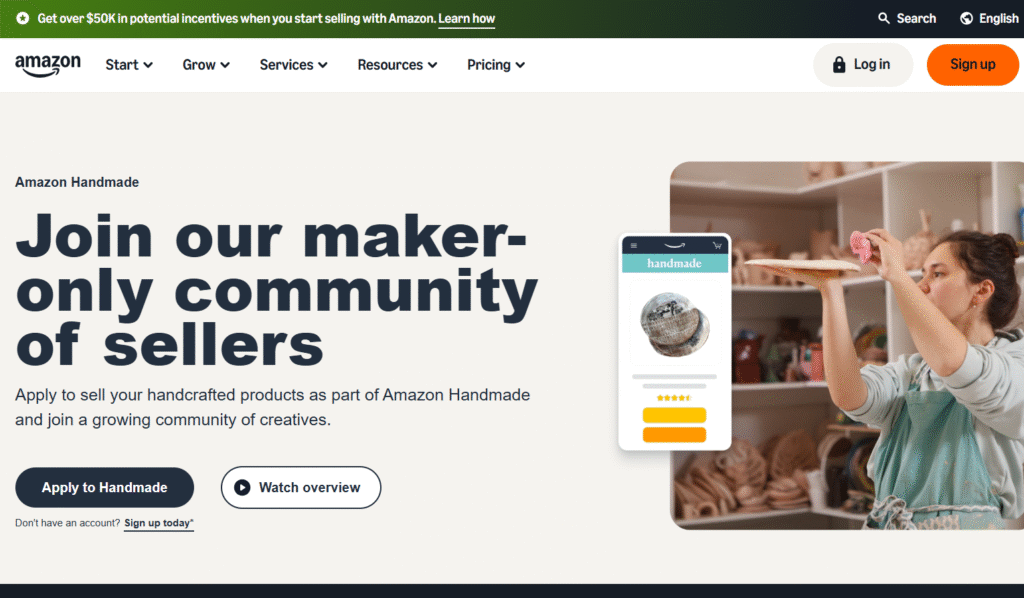15 Passive Income Ideas For Women To Make Extra Money

When I first started looking for ways to earn extra money, I wanted something that didn’t demand all my time.
That’s when I discovered passive income a way to earn even while doing other things I love.
I tried different ideas, from selling digital products to investing in small side projects, and it completely changed how I viewed money.
It taught me that financial growth doesn’t always mean working longer hours.
Look, I’m not going to sugarcoat this. When someone first told me about passive income, I rolled my eyes so hard they almost got stuck.
Another “make money while you sleep” scheme, right?
But here’s the thing: after years of working in finance and watching women struggle to balance everything (career, family, sanity).
I realized passive income isn’t some fairy tale. It’s actually one of the smartest financial moves you can make.
So, let’s talk about 15 realistic ways you can start earning money without being chained to your desk 24/7.
What Is Passive Income, Really?
Before we jump in, let’s clear something up. Passive income isn’t “do nothing and watch money magically appear” income. That’s called winning the lottery, and your odds there are, well… not great.
Let’s be real passive income isn’t “money for nothing.” It’s money that keeps coming in after you’ve done the initial work.
Think of it like planting a tree: you put in the effort early, and later it keeps bearing fruit with minimal effort.
Unlike a 9-to-5 where you trade time for pay, passive income lets you create something once and keep earning from it.
Why Women Need Passive Income (Like, Yesterday)
Women still earn less on average and often face setbacks like the “motherhood penalty.” Building passive income isn’t about luxury it’s about freedom and security.
It means not panicking over emergencies or feeling trapped in a draining job.
More Time For What Actually Matters
Ever feel like you’re constantly choosing between making money and being present in your life? Yeah, me too. Passive income gives you time back.
When money’s coming in from multiple streams, you’re not forced to work overtime or take on that extra client just to make ends meet.
Financial Security That Actually Feels Secure
Relying on one income source is like putting all your eggs in one basket, then juggling that basket on a tightrope. During a thunderstorm.
One job loss, one health crisis, one global pandemic (hi, 2020), and everything can fall apart.
Multiple income streams create a safety net that actually works.
The Confidence Boost Is Real
There’s something incredibly empowering about earning money from something you created. It’s proof that you’re more than your job title or your role in the family.
You’re a capable human who can build something valuable. Trust me, that feeling is worth way more than the actual dollars (though the dollars are pretty sweet too).
15 Passive Income Ideas For Women To Make Extra Money
Alright, enough theory. Let’s get into the actual money-making strategies. I’ve organised these from skills-based opportunities to investment-oriented options, so there’s something here regardless of where you’re starting from.
1. Become A Chef (Without The Restaurant Drama)

Ever have friends beg for your recipe? Or do people lose their minds over your homemade pasta sauce? Here’s a thought: stop giving that away for free.
The food industry is massive, and you don’t need to work gruelling restaurant hours to cash in.
Start a YouTube cooking channel where you share recipes and cooking tips.
Once you hit the monetization threshold (1,000 subscribers and 4,000 watch hours), you’ll earn ad revenue every time someone watches your videos, that includes while you’re sleeping 🙂
You could also create a food blog and monetise it through ads, sponsored posts, and affiliate links to kitchen gadgets.
Food blogs can earn anywhere from $500 to $10,000+ monthly once established.
But here’s my honest take: it takes 6-12 months of consistent posting to see real income. Don’t quit your day job on day one.
When I first started cooking professionally, I didn’t have a fancy kitchen or expensive tools.
I began by posting short recipe videos on Instagram and offering weekend meal prep for busy families in my neighborhood.
Within three months, word spread, and I had a waiting list. Eventually, I partnered with a local café that sold my pastries turning my weekend passion into a steady stream of income.
Another option? Develop your signature product. Package your grandmother’s BBQ sauce, that incredible spice blend you make, or your famous cookie mix.
Platforms like Shopify and Etsy make it easy to sell food products online. Just make sure you understand your local cottage food laws (they vary by state).
Pro tip: If you’re creating content, batch your work. Spend one day filming or writing multiple pieces, then schedule them out. That’s how you make it actually passive.
2. Start A Cleaning Service (And Let Others Do The Cleaning)
Okay, I know what you’re thinking: “How is cleaning passive income?” But hear me out.
The trick here is positioning yourself as the business owner, not the cleaner. You build the systems, market the services, and hire the team.
Think of yourself as the conductor, not the one scrubbing toilets (unless you want to be, no shade).
Cleaning businesses have incredible profit margins, often 40-50% after expenses. And people always need cleaning services.
Always. Start by offering specialized services like move-out cleanings or deep organizational services in your area. These command higher prices than regular house cleaning.
As you build your client base, hire reliable cleaners and implement online booking systems (platforms like Housecall Pro or Jobber can automate scheduling and payments).
Your role shifts to managing the business, securing clients, and handling customer service.
Reality check: This requires decent upfront work building your reputation and systems. But once you’ve got a solid team and regular clients?
You’re earning while your team does the work. That’s passive-adjacent income, which still counts in my book.
3. Become A Makeup Artist (Behind The Camera)
The beauty industry is worth over $500 billion globally, and you don’t need to be doing makeup at 6 AM for weddings to get your slice.
Create online makeup courses on platforms like Udemy or Teachable. Record comprehensive tutorials on topics like “Everyday Makeup for Beginners” or “Bridal Makeup Masterclass.”
Each time someone purchases your course, you earn money without lifting a makeup brush.
Or leverage social media. YouTube pays ad revenue once you’re monetised, and TikTok’s Creator Fund pays based on video views.
Post makeup tutorials, product reviews, and beauty tips. One viral video can change your income trajectory overnight (though don’t count on going viral; consistency matters more).
Affiliate marketing is another goldmine. Join programs like Sephora’s or Amazon’s affiliate program and earn commissions recommending products you actually use.
Even better? If you build a strong following, brands will pay you for sponsored content.
We’re talking anywhere from $500 to $10,000+ per sponsored post, depending on your audience size.
You need to know more than your target audience. Teaching beginners? You just need intermediate skills. It’s really that simple.
4. Tutor Students (Without The One-On-One Grind)

If you’re good at explaining concepts, whether it’s algebra, Spanish, coding, or even “how to adult”, you can package that knowledge and sell it repeatedly.
Create video courses on platforms like Skillshare, Udemy, or Teachable. Record your lessons once, upload them, and earn every time someone enrols. Skillshare pays based on minutes watched, while Udemy lets you price your courses individually (anywhere from $20 to $200+).
Here’s what nobody tells you: the courses that sell best solve specific problems.
“How to Pass the SAT Math Section” sells better than “General Math Help.” “Spanish for Travellers” performs better than “Learn Spanish.” Get specific, get niche.
You could also write and sell study guides or workbooks as digital downloads on platforms like Etsy or Gumroad. Teachers and parents constantly search for these resources.
Price them between $5-$30, and watch passive income roll in.
My honest opinion? Educational content has an incredible shelf life. A course you create today can still be earning you money five years from now. That’s compound interest for your time.
5. Be A Tour Guide (From Your Couch)
Love your city? Know all the hidden gems tourists miss? Turn that knowledge into income without actually walking tours every day.
Create self-guided audio tours and sell them on platforms like Gumroad or Etsy.
People download your audio guide, explore at their own pace, and you earn money without being there. You can charge $5-$15 per guide, and tourists appreciate the flexibility.
Or write detailed digital travel guides with itineraries, restaurant recommendations, and insider tips. Package them as PDF downloads and market them on travel forums, your blog, or social media.
Ever notice how travel bloggers always have those “7-Day Tokyo Itinerary” guides for sale? Yeah, there’s a reason. They work.
You could also start a travel blog or YouTube channel focused on your city or region. Share destination tips, hidden spots, and travel hacks.
Monetize through ads, affiliate links (hotel bookings, travel gear), and sponsored content from local businesses.
Real talk: This works especially well if you’re in a touristy area, but even small towns have interesting stories. People search for “things to do in [literally any location].”
Might as well be you providing those answers.
6. Sell Your Photos (Yes, Even Phone Photos)
Got a decent smartphone camera? Congratulations, you’re equipped to start earning from photography.
Upload your photos to stock photography websites like Shutterstock, Adobe Stock, or Alamy.
Every time someone downloads your photo, you earn a royalty (usually $0.25 to $3 per download, depending on the platform and license type).
Consistency beats perfection. Having 500 decent photos uploaded is more profitable than having 10 perfect ones.
Stock photo users need variety, lifestyle shots, business images, food photography, and nature scenes.
Whatever you’re photographing, someone needs it. You can also sell digital prints on Etsy.
Create downloadable wall art that customers can print at home. Price them at $5-$15, and you never have to handle inventory or shipping.
Printable art is huge right now, think motivational quotes, botanical prints, and abstract designs.
Another option? Create and sell Lightroom presets (those filters that make photos look amazing with one click).
If you’ve developed a signature editing style, photographers will pay $10-$50 for preset packages.
Sell them on your website, Etsy, or Creative Market.
Photography is one of the most overlooked passive income streams. You’re probably already taking photos, anyway, might as well get paid for it.
7. Rent Out Your Car (While It Just Sits There)
Your car spends about 95% of its life parked. Why not make it earn money during all that downtime?
List your car on Turo, Getaround, or HyreCar. These peer-to-peer car rental platforms connect you with people who need temporary transportation.
You set your price, availability, and requirements. The platform handles insurance, payments, and most customer service.
Depending on your car’s make, model, and location, you could earn $200-$1,000+ monthly.
Luxury or specialty vehicles earn more. Some people literally finance car purchases using rental income, and the car pays for itself.
Worried about wear and tear? That’s valid. But most platforms include insurance coverage (up to $1 million), and you can require minimum renter ages and driving records.
Plus, you’re earning money on an asset that’s depreciating anyway. Might as well offset some of that depreciation.
Alternative option: Rent your car specifically to rideshare or delivery drivers who don’t own vehicles. Companies like HyreCar specialise in this.
These rentals tend to be longer-term (weekly or monthly), providing more stable income.
8. Sell Handmade Products (Or Pay Someone Else To Make Them)

Got crafty skills? Love making jewellery, candles, soaps, or home décor? There’s a market for that.
Start by selling on Etsy, Shopify, or Amazon Handmade. These platforms give you access to millions of potential customers without needing to build your own website or audience from scratch.
But here’s where it gets interesting: you don’t have to make everything yourself.
Once you’ve validated that your products sell, you can outsource production. Hire crafters or work with manufacturers while you focus on design, branding, and marketing.
You shift from being a maker to being a business owner.
Or skip physical production entirely. Sell digital products like printable wall art, wedding invitation templates, planner pages, or craft patterns.
Create once, sell infinitely. No inventory, no shipping, just pure passive income.
Pro tip: Personalization sells. Products that customers can customize (names, dates, quotes) command higher prices and fly off digital shelves.
People will happily pay $20-$40 for something personalized versus $10 for something generic.
9. Become A Nanny Or Babysitter (The Smart Way)
Childcare is always in demand, but let’s be real, babysitting isn’t passive. Unless you flip the model.
Instead of being the babysitter, create a babysitting agency. Build a platform (even a simple website or Facebook group works initially) that connects parents with vetted babysitters.
You charge a membership fee or take a commission on bookings. You’re the middleman facilitating connections, not the one changing diapers.
List your services on platforms like Care.com or Sittercity to find families, then build your roster of reliable sitters.
Market to local parents through community groups, school networks, and social media.
Reality check: This requires strong organisational skills and liability considerations (background checks, insurance).
But once systems are in place, you’re earning from others’ labor. That’s the definition of passive-adjacent income.
10. Offer Resume Writing Services (At Scale)
Everyone needs a résumé at some point, and most people’s résumés are terrible. If you can write compelling, ATS-friendly résumés, you’ve got a marketable skill.
But instead of writing custom résumés one-by-one (that’s active income), create résumé templates.
Design professional, industry-specific templates and sell them on Etsy, Creative Market, or your own website. Price them at $5-$20, and job seekers will buy them by the hundreds.
Or create an online course teaching résumé writing. Cover topics like “How to Beat Applicant Tracking Systems” or “Writing a Career-Change Résumé.”
Sell it on Udemy or Teachable for $30-$100. Career advice courses sell incredibly well because people are desperate for job search help.
You could also write and sell e-books on job search strategies, interview preparation, or career pivoting. Publish on Amazon Kindle Direct Publishing and earn 70% royalties on each sale.
Here’s the thing: The job market is always moving, which means people are always job searching. This is evergreen content that stays relevant year after year.
11. Become A Translator (With AI Doing The Heavy Lifting)
Fluent in multiple languages? That’s literally a money-making skill sitting in your brain.
Offer translation services on Upwork, Fiverr, or PeoplePerHour. But to make it more passive, create pre-translated resources that people can purchase repeatedly.
Think legal document templates, business form translations, or common phrase guides for specific industries.
Sell these on your website, Etsy, or Gumroad. A lawyer needing Spanish contract templates or a business needing French business correspondence examples will gladly pay $20-$100 for ready-made translations.
Modern twist: Partner with AI translation tools. Use them to handle basic translation work, then you edit for accuracy and cultural nuance.
This dramatically increases your output without proportionally increasing your time.
You’re essentially becoming a translation editor rather than a translator, which is more scalable.
12. Start A Podcast (And Actually Monetise It)
Podcasting isn’t just for celebrities and tech bros. If you can talk about something interesting for 20-40 minutes, you can start a podcast.
Choose a niche you’re passionate about, personal finance for women, entrepreneurship stories, book reviews, parenting hacks, whatever.
Consistency matters way more than perfection. A decent microphone ($50-$100) and free editing software like Audacity are all you need to start.
Monetise through:
- Sponsorships: Once you hit 500-1,000 downloads per episode, brands will pay for ad spots ($15-$30 per 1,000 downloads)
- Patreon or Buy Me a Coffee: Listeners pay monthly for bonus content or early access
- Affiliate marketing: Recommend products and earn commissions
- Your own products/services: Use the podcast to promote your courses, books, or coaching
Real talk? Podcasting takes time to build. But once you’ve got 50-100 episodes, you’ve created a content library that continues attracting new listeners and generating income.
Plus, you can repurpose podcast content into blog posts, social media clips, and YouTube videos.
One piece of content, multiple income streams.
13. Offer Social Media Management (Without Managing Anything)
Businesses desperately need social media help but don’t have time to DIY it. Rather than trading hours for dollars as a social media manager, create scalable products.
Develop social media templates, content calendars, or caption libraries and sell them on Etsy or Creative Market.
Small business owners will pay $15-$50 for ready-made content they can customise. Create these once, sell them hundreds of times.
Or teach social media management. Create online courses on platforms like Skillshare or Teachable covering topics like “Instagram Growth for Small Businesses” or “Content Strategy 101.”
Business owners trying to DIY their marketing will gladly pay $50-$200 for structured guidance.
You could also write and sell e-books on social media strategy. Amazon Kindle makes self-publishing ridiculously easy, and marketing books sells consistently.
Pro tip: Find your freelance clients through platforms like Upwork or Fiverr initially, then transition them to purchasing your passive products. It’s easier to sell to people who already trust your expertise.
14. Be A Fitness Instructor (From Your Living Room)
Love fitness? You can monetise that passion without teaching live classes every day.
Create workout programs and sell them as digital downloads. Think “30-Day Ab Challenge” or “Beginner’s Strength Training Program.” Package them as PDF guides with exercise descriptions, photos, and progressive plans. Sell on your website, Etsy, or fitness-specific platforms for $20-$50.
Or start a fitness YouTube channel. Post workout videos, form tutorials, and fitness tips. Once monetised, you earn ad revenue passively.
Some fitness YouTubers earn $2,000-$10,000+ monthly from ad revenue alone.
Subscription-based models work incredibly well for fitness. Create a membership site (using Patreon or Teachable) where members pay monthly for access to workout videos, meal plans, and community support.
Just 100 members paying $20/month equals $2,000 monthly recurring revenue.
Honest take? The fitness space is crowded, but there’s always room for authentic voices. Don’t try to be everyone’s fitness guru.
Find your niche, fitness for busy moms, workouts for people with injuries, strength training for beginners, and own it.
15. Offer Freelance Services (Then Automate Everything)
Freelancing typically means active income, but you can flip it.
Instead of offering custom work, create done-for-you digital products. If you’re a writer, sell pre-written blog post templates or social media caption bundles.
If you’re a graphic designer, sell logo templates, social media graphics, or brand kit templates. If you’re a web developer, sell website themes or plugins.
Platforms like Creative Market, Etsy, or Gumroad connect you with buyers. Price your products at $10-$100 depending on complexity. One well-designed product can sell hundreds of times.
Or create online courses teaching your freelance skills. Every freelance skill, writing, design, coding, marketing, and virtual assisting, has aspiring freelancers willing to pay to learn. Build a comprehensive course and sell it on Udemy or Teachable.
Another angle: Set up subscription services where clients pay monthly for ongoing resources.
Think “Monthly Social Media Template Packs” for designers or “Weekly Blog Post Outlines” for writers.
Recurring revenue is the holy grail of passive income.
Making Passive Income Actually Work: The Real Talk
Okay, let’s address the elephant in the room. Passive income isn’t magic, and it’s definitely not get-rich-quick.
Every single one of these ideas requires upfront work. You’re essentially front-loading your effort to earn later. Some require more initial investment (time or money) than others, but none are truly “set it and forget it” from day one.
Start Small, Think Big
Don’t try to launch five passive income streams simultaneously. That’s a recipe for burnout and half-finished projects. Pick one idea that aligns with your skills, interests, and resources.
Focus on that until it’s generating consistent income (even if it’s just $100 monthly). Then add another stream.
Time Investment Reality Check
Most of these ideas take 3-12 months before generating meaningful income. If you’re expecting $5,000 monthly passive income in six weeks, I’m going to save you some disappointment right n: w, that’s not happening. But earning $500-$2,000 monthly within a year? Totally realistic with consistent effort.
The Power of Compound Passive Income
Here’s where it gets exciting. Once you’ve established one stream, adding a second becomes easier.
You’ve learned the systems, built an audience (even a small one), and understand what works. Your third stream launches faster than your second. Your fourth is even faster.
I’ve seen women start with one Etsy shop selling printables, earning $300 monthly. Within two years, they’ve added a YouTube channel, online courses, and affiliate marketing, now earning $3,000+ monthly from multiple streams.
That’s not luck. That’s a strategic, consistent effort compounding over time.
Maintenance Is Still Required
“Passive” doesn’t mean “zero work forever.” You’ll need to update products occasionally, respond to customer questions, or refresh your content.
But we’re talking hours per month, not hours per day. That’s the difference that matters.
Final Thoughts
The women who succeed with passive income share one trait: they start. They don’t wait for perfect conditions or until they’re “expert enough.” They pick something, start building, and adjust as they go.
You don’t need permission to start earning more money. You don’t need someone to hand you an opportunity. You’ve got skills, knowledge, and experiences that other people need and will pay for.
So, here’s my challenge to you: Pick one idea from this list. Just one. Spend the next week researching and planning how you’d launch it. Then spend the following month building it. Don’t aim for perfection, aim for done.
Now stop reading and go build something. Your future self will thank you 🙂








